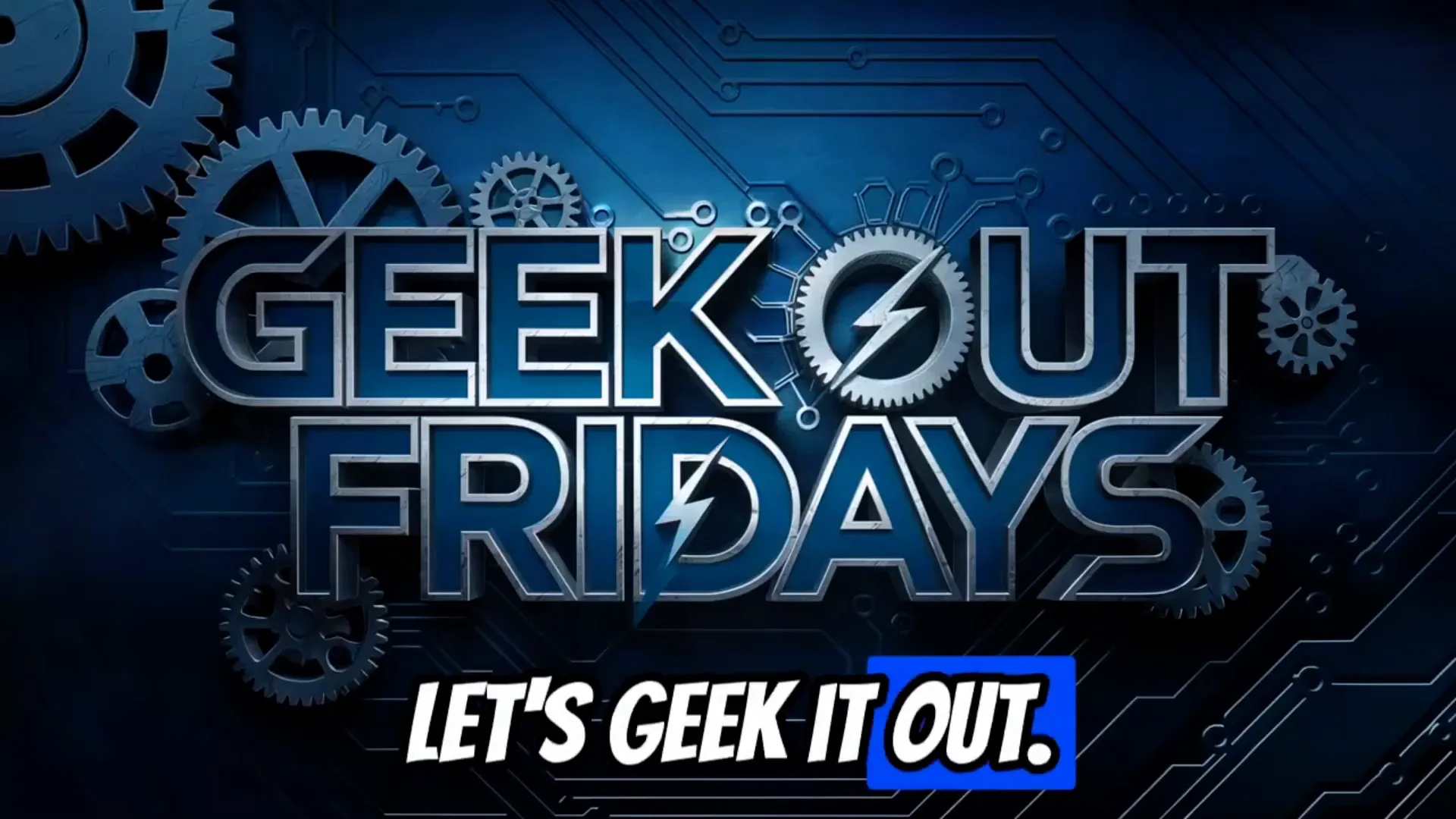Aug 27, 2025
Quick Wins - Stop Wasting Money!
The 3 Questions You MUST Ask Before You Buy a New Marketing Tool
Hi — I’m Damon Nelson from GeekOutFridays. If you’re anything like me, your Stripe or bank feed looks like a museum of “shiny” marketing tools you tried once and haven’t touched since. I made this guide to help you kill subscription overload, keep what actually moves the needle, and build a lean tool stack that supports revenue, saves time, and builds authority.
The problem: subscription overload and FOMO-driven buying
Every launch season brings a dozen tools pitched as “must-haves.” A polished sales page promises instant ROI, and you click buy. Six months later, you’re staring at a $27 charge and asking, “What is this even for?” Sound familiar?
Beyond the wasted dollars, these subscriptions create noise: too many interfaces, too many logins, and a fragmented workflow. Worse, many services make cancellation hard on purpose — a sign that they rely on inertia to keep customers paying.
I think a good tool treats its users well: a simple reminder before renewal and an easy cancel option. If canceling is intentionally difficult, be skeptical.
Table of Contents
- The 3 Questions You MUST Ask Before You Buy a New Marketing Tool
- The problem: subscription overload and FOMO-driven buying
- The simple fix: a three-question framework
- How to run the audit: the Tool Stack Audit worksheet
- Rules of the audit — practical thresholds
- Recommended tool stack: free, budget, mid-tier, and premium options
- Real-world examples from my stack
- Action plan: a 30-minute audit you can run right now
- Final thoughts — be ruthless, but smart
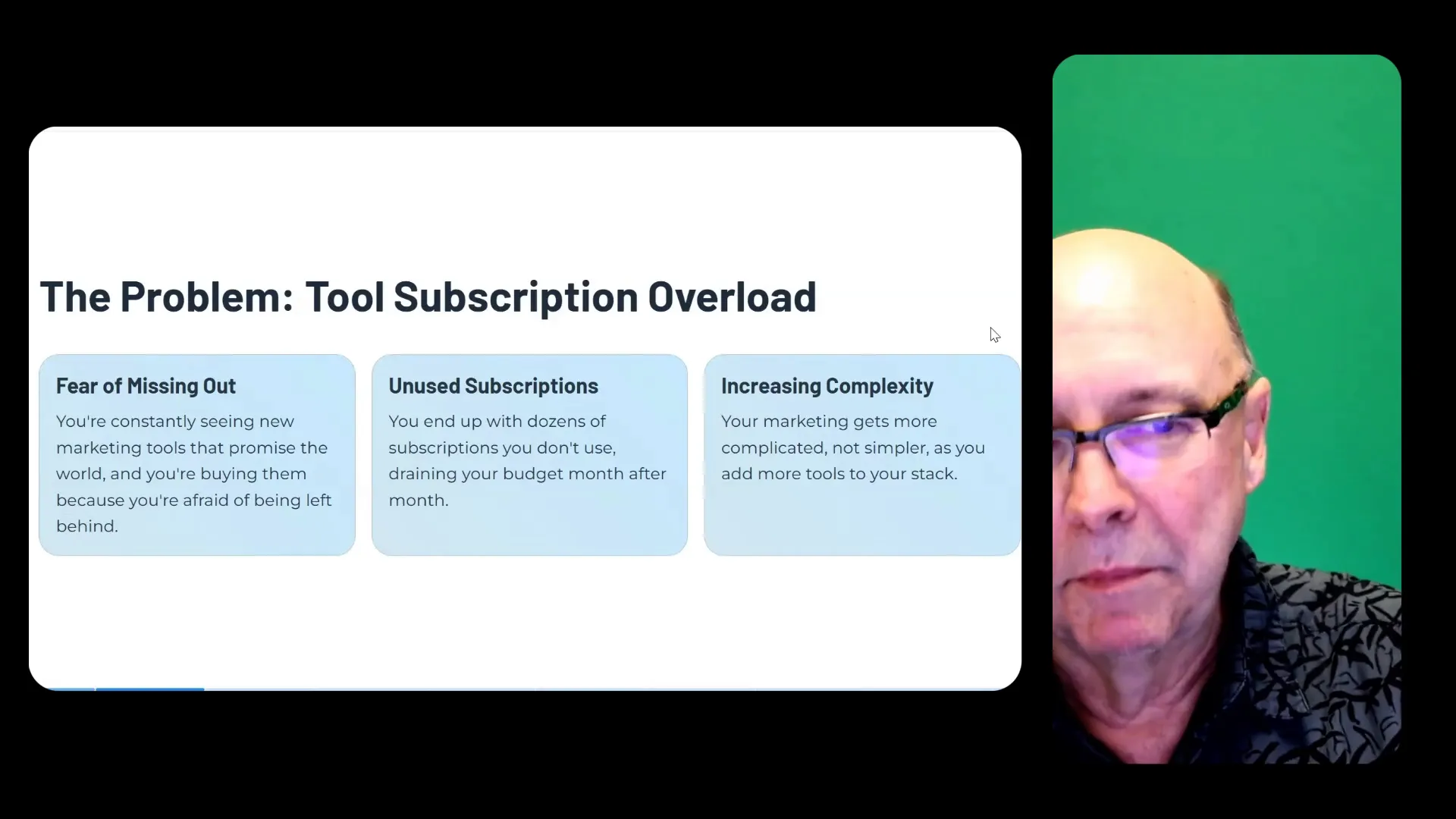
The simple fix: a three-question framework
I use one core framework before buying anything new, and I run it as a quick monthly (or quarterly) audit. Ask these three questions for every tool in your stack:
- What will this tool automate?
- Can existing tools do this?
- Does it support a core business goal?
These aren’t philosophical — they’re practical. If a tool doesn’t automate a specific, repetitive task, or you can’t name the monthly job it performs, it’s unlikely to earn its keep.
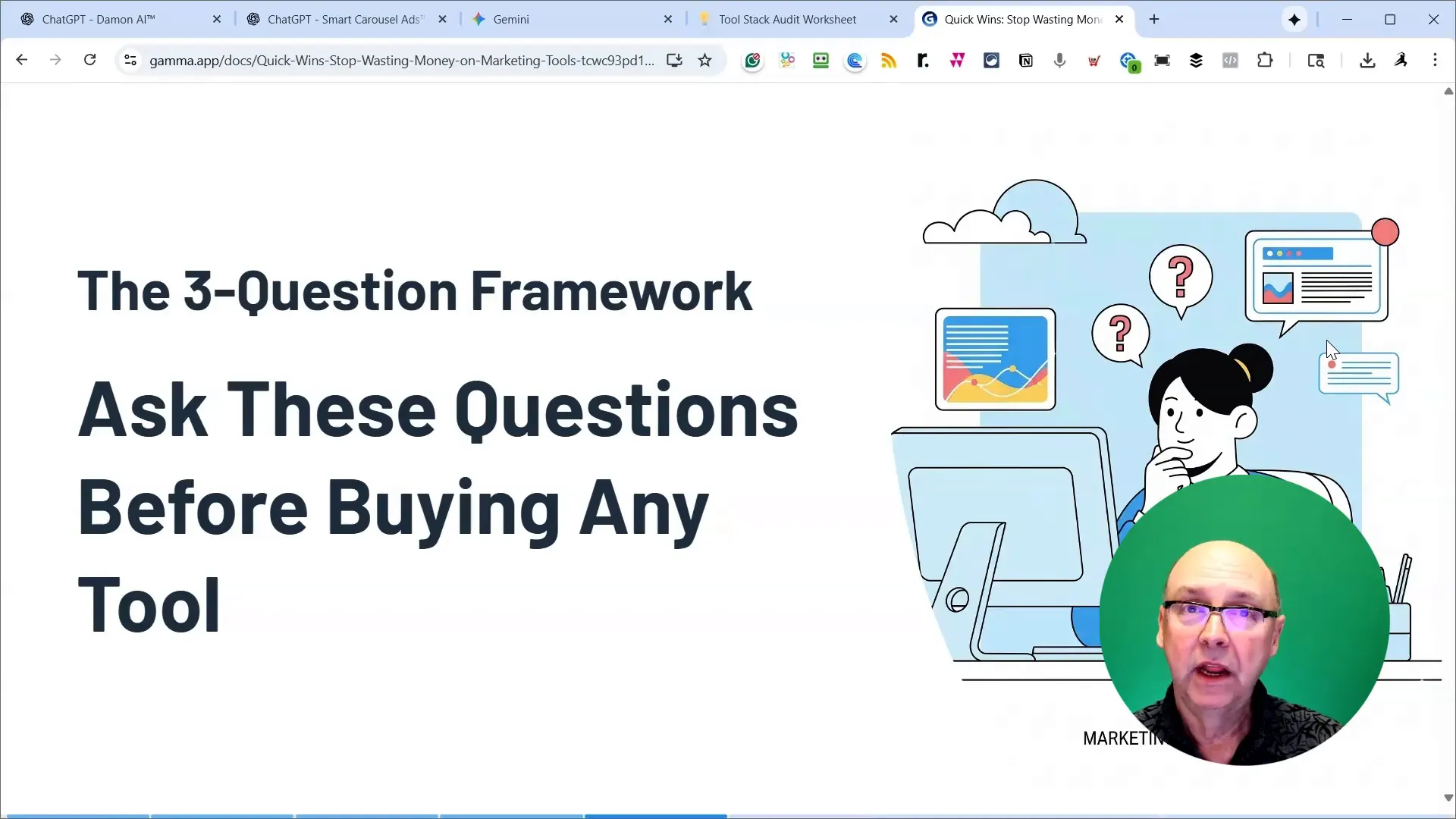
Question 1 — What will this tool automate?
Automation is the primary reason to pay. If a tool saves you repetitive work reliably, it can free up hours every month. But if it’s mainly a manual task that requires constant intervention, you’re trading subscription dollars for your time — and that’s not scalable.
Example: a scheduler that automatically posts to social channels vs. a “content helper” that still needs you to copy, format, and publish every time. Only the former is true automation.
Question 2 — Can existing tools do this?
Audit what’s already on your machines and in your accounts. I’ve personally found myself paying for multiple video generators while owning Camtasia and other robust editors. Same for content: your current CMS, Google Docs, Notion, or even Canva might cover 80% of what a pricier tool offers.
Before you subscribe, ask: can I achieve 90% of the outcome with something I already have? If yes, don’t buy the 10% convenience until you’re sure it’s worth the extra cost.
Question 3 — Does it support a core business goal?
This is the anchor question. There are three measurable business outcomes I use to judge any tool:
- Revenue — Does this tool directly generate or influence sales?
- Time saved — Does it save significant time (I use >2 hours/month as a practical threshold)?
- Authority/Brand — Does it improve our credibility, SEO, or brand recognition in ways that matter?
If a tool fails all three, it’s probably a candidate for cancellation. If it checks one or two, investigate whether a cheaper or existing alternative can do the job. If it checks all three, you’ve found a keeper.
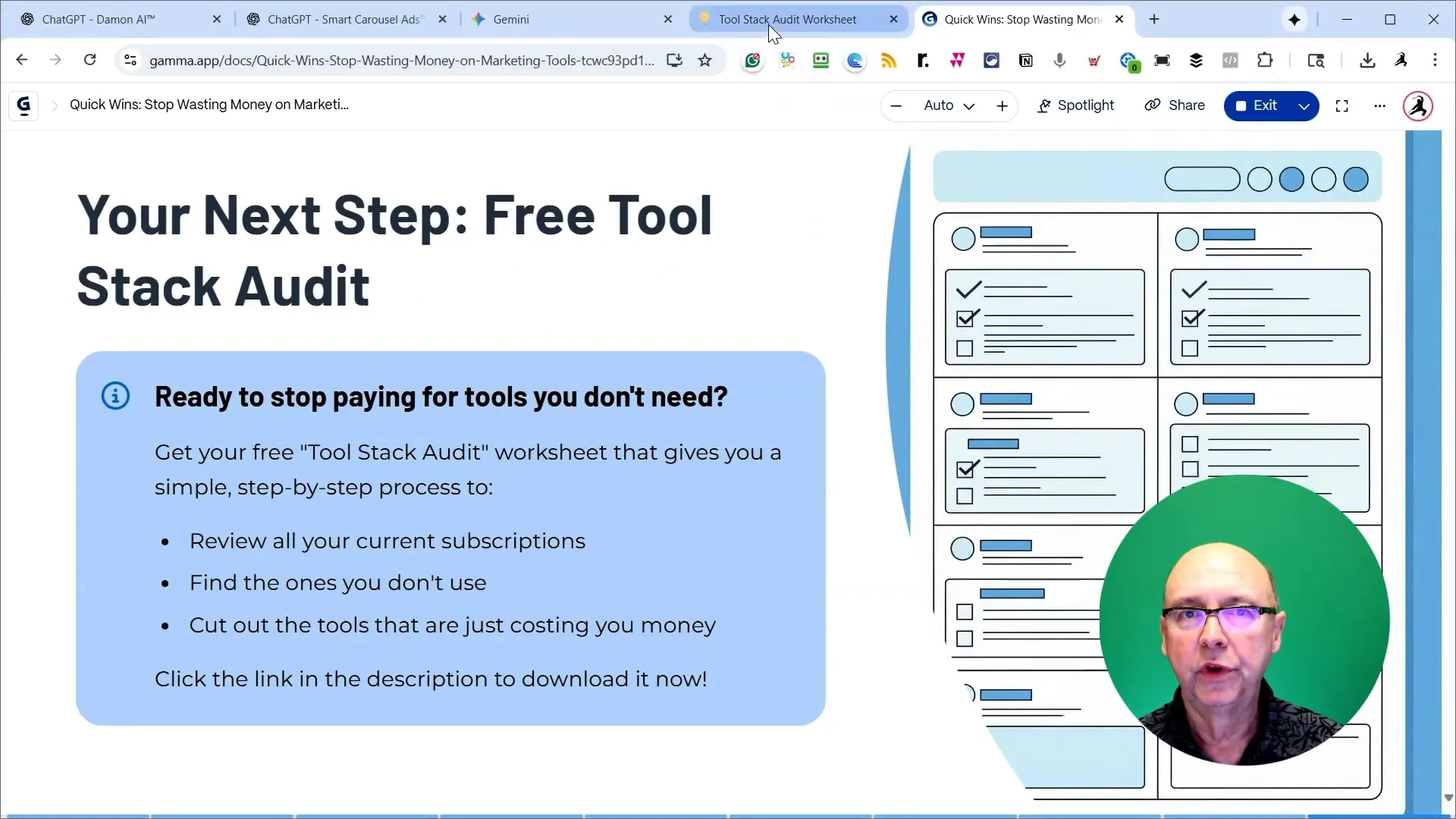
How to run the audit: the Tool Stack Audit worksheet
I built a simple Google Sheet that makes the audit painless. It’s a three-question checklist per tool with these columns:
- Tool name
- Monthly or annual cost
- Q1: Use at least once a month? (Yes/No)
- Q2: Does it directly generate revenue? (Yes/No)
- Q3: Does it save significant time? (Yes/No)
Decisions based on answers:
- If you get three “No” answers across a row, cancel the subscription.
- If you get one or two “Yes” answers, investigate: can an existing tool replace it? Can you downgrade to a lower plan? Or is it worth keeping for a niche need?
- If you get three “Yes” answers, keep, learn, and master that tool — it’s earning its place.
Practical tip: track each tool’s login, renewal date, and an annualized cost column so you can see the real yearly impact. Small monthly subscriptions add up fast.
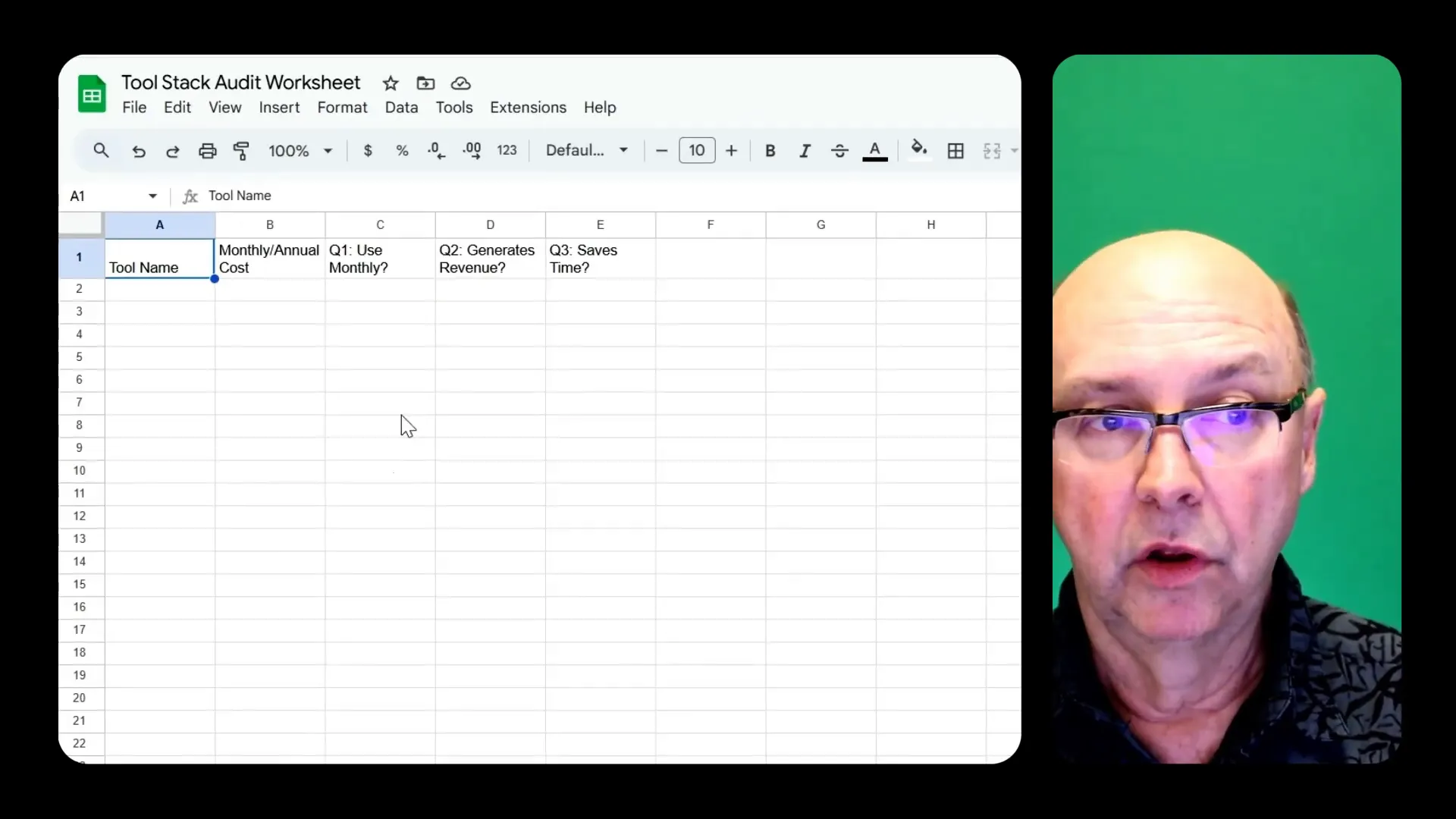
Rules of the audit — practical thresholds
Here are the rules I follow so the process isn’t wishy-washy:
- Use it at least once a month: If you don’t, it’s a candidate for cancellation or downgrading.
- Revenue mapping: If you can’t point to a lead, sale, or measurable conversion influenced by the tool, mark “No” for revenue.
- Time saved threshold: I use two hours a month as the minimum savings required to justify a paid tool. If it saves less, consider manual alternatives or cheaper options.
These thresholds make the audit objective and repeatable. Run it at minimum every three months, and ideally monthly if you’re actively testing new tools.
Recommended tool stack: free, budget, mid-tier, and premium options
After years of building automation-first businesses and shipping tools, here’s a practical tool stack I recommend — broken into tiers. Pick the tier that fits your workload.
AI writing & content creation
- Free: Use built-in tools like Google Docs + free AI assistants or browser extensions that offer limited free generation.
- Budget: Affordable AI writing tools with limited monthly credits — good if you create content occasionally.
- Mid-tier: Subscription tools that include SEO and content brief generation, useful for agencies producing consistent content.
- Premium: Enterprise AI suites with team features and advanced integrations.
Social media management
I recommend Buffer as a strong starting point — it has a very usable free plan and scales affordably.
- Free: Buffer’s free plan (good scheduling basics)
- Budget: Paid Buffer plan for more profiles and queue capacity
- Mid/Premium: Tools with analytics, team workflows, and content calendars
Email marketing, landing pages, websites
There are excellent one-page website builders that are free and perfect if you only need a few lead pages. Start there before jumping to heavier platforms.
- Free: One-page website builders for lead capture
- Budget: MailerLite, ConvertKit entry plans for basic lists and landing pages
- Mid/Premium: Full-featured platforms for automation, segmentation, and conversions
Video editing
If you produce short-form content, CapCut is an outstanding free/low-cost option once you’ve done the training. For desktop editors, Camtasia is a solid mid-tier choice. Adobe Creative Cloud is powerful but overkill unless you create high-volume, complex productions.
- Free/Budget: CapCut (great for social videos)
- Mid-tier: Camtasia for desktop editing
- Premium: Adobe Creative Cloud for pros
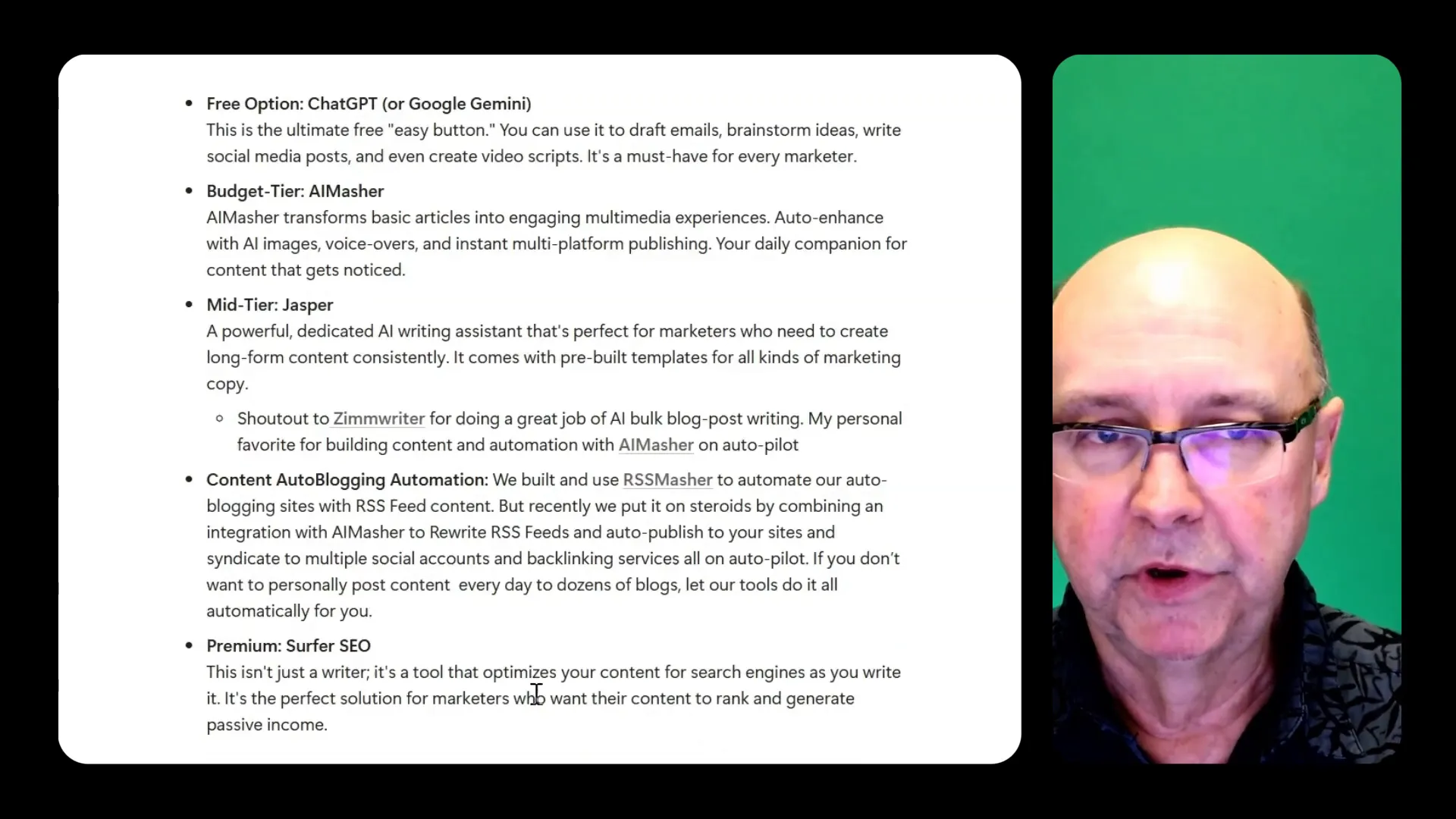
Team management and documentation
For project management, Trello’s free tier is remarkably capable. Our team uses Trello daily on the free plan. For course content and long-form documentation, Kajabi is great for hosted courses, while Notion is the swiss-army knife for internal documentation and knowledge bases.
- PM Free: Trello (free plan)
- Docs & training: Notion (free/personal plans), Kajabi for hosted courses
Image makers and creative assets
Many all-in-one content platforms can handle quick image generation and templates — often included in Canva Pro. I keep Canva Pro because it saves enormous time when producing consistent visual assets across channels.
- Free: Canva free or built-in CMS features
- Paid: Canva Pro for teams and templates
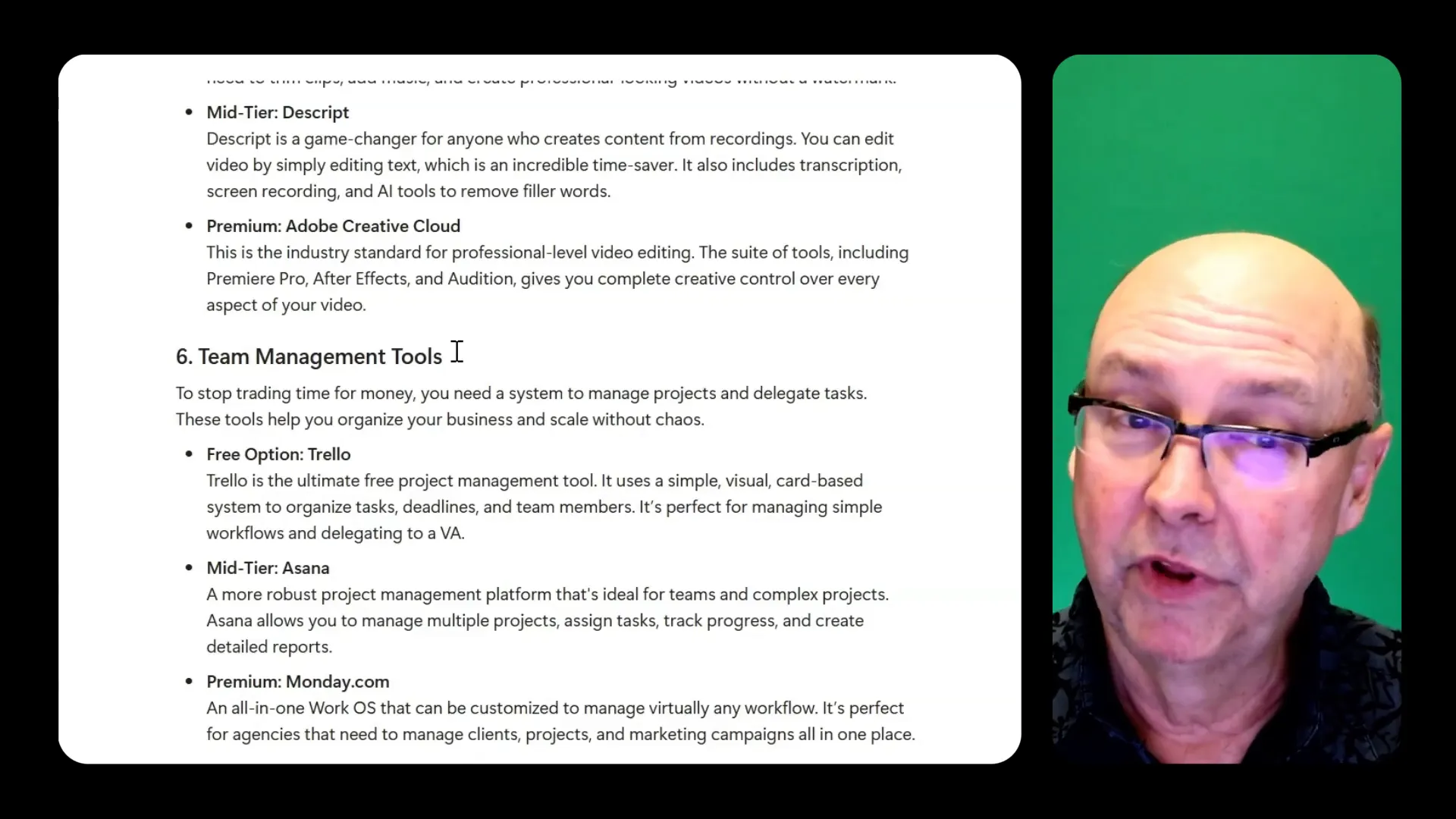
Real-world examples from my stack
I use several paid tools, but I’m intentional about each one. For example:
- Canva Pro — I use it frequently for graphics and social posts. It saves time and supports brand consistency.
- Descript — I had it sitting unused for months, but new features made it worth keeping once I started leveraging them for editing and transcription.
- Camtasia — A paid desktop editor that replaced several cheaper tools because it matched my workflow.
The lesson: don’t keep something because you spent money on it years ago. Keep things because they meet the three-question test now.
Action plan: a 30-minute audit you can run right now
Here’s a step-by-step checklist you can run in half an hour:
- Open your bank/Stripe report and list every recurring charge for the past 12 months.
- Populate the audit worksheet: tool name, cost, usage frequency, and answer the three questions.
- Mark tools with three “No” answers for cancellation and schedule cancellation before next renewal.
- For tools with 1–2 “Yes” answers, investigate cheaper plans, alternatives you already own, or trial downgrades.
- For tools with three “Yes” answers, create a short-playbook: how your team uses it, who owns it, and measurable outcomes.
Tool Stack Audit Worksheet
https://rssmasher.notion.site/Tool-Stack-Audit-Worksheet-2547123fca2080d7845dcccfabc7c4f4
Final thoughts — be ruthless, but smart
Shiny tools can feel like progress, but true progress is measured by outcomes: revenue, time saved, and stronger authority. Use this three-question framework to bring objectivity to your purchases, keep what genuinely helps, and cut what’s just noise.
Keep and master the tools that get three yeses. Cancel or replace the rest.
Run this audit monthly or at least every three months. Track annualized costs so those $7 and $17 subscriptions don’t silently accumulate into a few thousand dollars a year. If you want to simplify the process, build the Google Sheet I mentioned and treat it like a financial control for your marketing stack.
Want to geek out on automation, AI, and marketing systems? Keep testing intentionally, and let your tools serve your business — not the other way around.
Want to Rewrite URLs with AI |
|
Check out this New Chrome Extension in AIMasher |
| Watch this Video |
